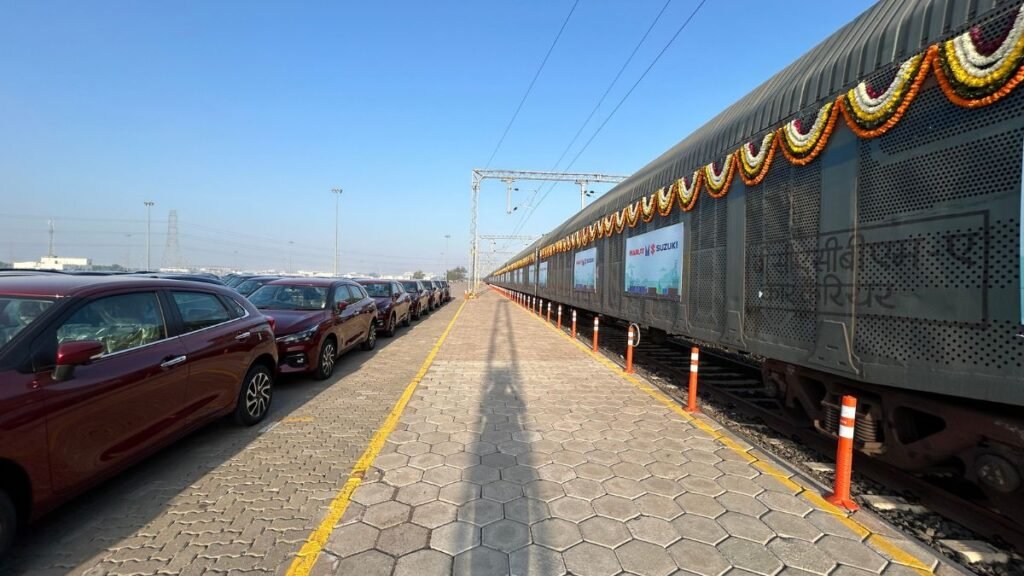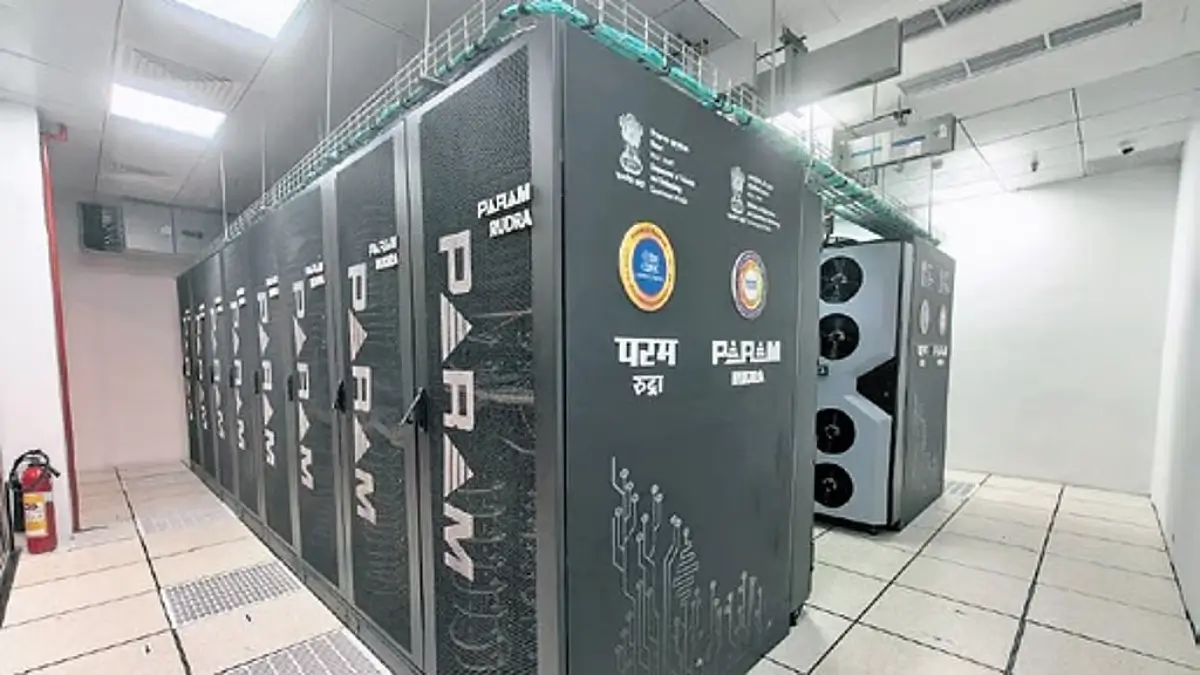Prime Minister Narendra Modi Inaugurates India’s First Automobile In-Plant Railway Siding
In a significant development aimed at enhancing the transportation infrastructure for the automobile industry, Prime Minister Narendra Modi inaugurated India’s first Automobile In-Plant Railway Siding. The inauguration ceremony, held at the Maruti Suzuki manufacturing plant in Gurugram, marked a crucial milestone in India’s efforts to bolster its manufacturing sector and promote sustainable transportation solutions.
The inauguration of India’s first Automobile In-Plant Railway Siding by Prime Minister Narendra Modi signifies a major step towards modernizing the country’s transportation infrastructure, particularly in the automotive sector. This initiative holds immense importance in the context of fostering industrial growth, improving logistical efficiency, and reducing carbon emissions associated with traditional modes of transportation.
The Automobile In-Plant Railway Siding at the Maruti Suzuki manufacturing plant is equipped with state-of-the-art facilities to facilitate seamless transportation of automobiles directly from the production units to various parts of the country. This innovative infrastructure is expected to streamline the supply chain process, minimize transit time, and optimize resource utilization, thereby benefitting both manufacturers and consumers.
The establishment of the Automobile In-Plant Railway Siding is poised to revolutionize the automotive logistics landscape in India. By providing a dedicated railway connectivity solution within manufacturing facilities, it promises to alleviate the burden on road transportation networks, mitigate congestion, and enhance overall operational efficiency. Additionally, this initiative aligns with the government’s vision of promoting sustainable modes of transportation and reducing the carbon footprint associated with the automotive sector.
The inauguration of India’s first Automobile In-Plant Railway Siding underscores the country’s commitment to fostering a conducive environment for industrial growth and innovation. By investing in advanced infrastructure projects such as this, India aims to enhance its competitiveness on the global stage, attract foreign investment, and position itself as a preferred destination for manufacturing operations.
The inauguration of India’s first Automobile In-Plant Railway Siding by Prime Minister Narendra Modi heralds a new era of progress and innovation in the country’s transportation sector. This landmark initiative not only underscores the government’s proactive approach towards infrastructure development but also exemplifies its commitment to fostering sustainable economic growth and industrial advancement.

Why this News is Important
Enhancing Transportation Infrastructure:
The inauguration of India’s first Automobile In-Plant Railway Siding represents a significant milestone in the ongoing efforts to modernize the country’s transportation infrastructure, particularly in the automotive sector. This initiative is poised to improve logistical efficiency, reduce transit time, and bolster the overall competitiveness of the automobile industry.
Promoting Sustainable Transportation Solutions:
By facilitating the seamless transportation of automobiles via rail networks, the Automobile In-Plant Railway Siding aligns with the government’s vision of promoting sustainable modes of transportation and reducing the carbon footprint associated with the automotive sector. This underscores India’s commitment to environmental conservation and sustainable development.
Stimulating Industrial Growth:
The establishment of dedicated railway connectivity within manufacturing facilities is expected to stimulate industrial growth, attract investment, and create employment opportunities in the automotive sector. This initiative is crucial for enhancing the competitiveness of Indian industries and fostering economic development.
Historical Context
India’s automotive industry has witnessed significant growth and expansion in recent decades, emerging as one of the key contributors to the country’s economic development. However, inadequate transportation infrastructure has often posed challenges for the efficient movement of goods, particularly in the automobile sector. Recognizing the need to address these infrastructure constraints, the government has been actively promoting initiatives to modernize transportation networks and enhance logistical efficiency.
In recent years, there has been a concerted effort to augment railway infrastructure and promote the integration of railways into the broader logistics ecosystem. Various projects aimed at improving last-mile connectivity, enhancing freight transportation capabilities, and facilitating multimodal transportation have been initiated across the country. The inauguration of India’s first Automobile In-Plant Railway Siding is a testament to these efforts and reflects the government’s commitment to bolstering the country’s transportation infrastructure.
5 Key Takeaways from “Prime Minister Narendra Modi Inaugurates India’s First Automobile In-Plant Railway Siding”
| Serial Number | Key Takeaway |
|---|---|
| 1. | India’s first Automobile In-Plant Railway Siding inaugurated by Prime Minister Narendra Modi. |
| 2. | Located at the Maruti Suzuki manufacturing plant in Gurugram, the project aims to enhance logistical efficiency in the automotive sector. |
| 3. | The initiative aligns with the government’s vision of promoting sustainable transportation solutions and reducing carbon emissions. |
| 4. | The Automobile In-Plant Railway Siding is expected to streamline the supply chain process and optimize resource utilization. |
| 5. | This landmark project signifies India’s commitment to fostering industrial growth and enhancing global competitiveness. |
Important FAQs for Students from this News
1. What is the significance of India’s first Automobile In-Plant Railway Siding?
Answer: The Automobile In-Plant Railway Siding aims to enhance logistical efficiency in the automotive sector by facilitating the seamless transportation of automobiles via rail networks directly from manufacturing plants.
2. How does the inauguration of the Automobile In-Plant Railway Siding align with the government’s objectives?
Answer: The initiative aligns with the government’s vision of promoting sustainable transportation solutions and reducing carbon emissions by integrating railways into the broader logistics ecosystem.
3. What are the key features of the Automobile In-Plant Railway Siding project?
Answer: The project includes state-of-the-art facilities to streamline the supply chain process, minimize transit time, and optimize resource utilization within manufacturing facilities.
4. How does the establishment of the Automobile In-Plant Railway Siding impact the automotive industry?
Answer: It is expected to revolutionize the automotive logistics landscape by mitigating congestion, reducing the burden on road transportation networks, and enhancing overall operational efficiency.
5. What are the broader implications of India’s efforts to modernize transportation infrastructure?
Answer: India’s initiatives to modernize transportation infrastructure not only stimulate industrial growth, attract investment, and create employment opportunities but also enhance the country’s global competitiveness in the manufacturing sector.
Some Important Current Affairs Links

















